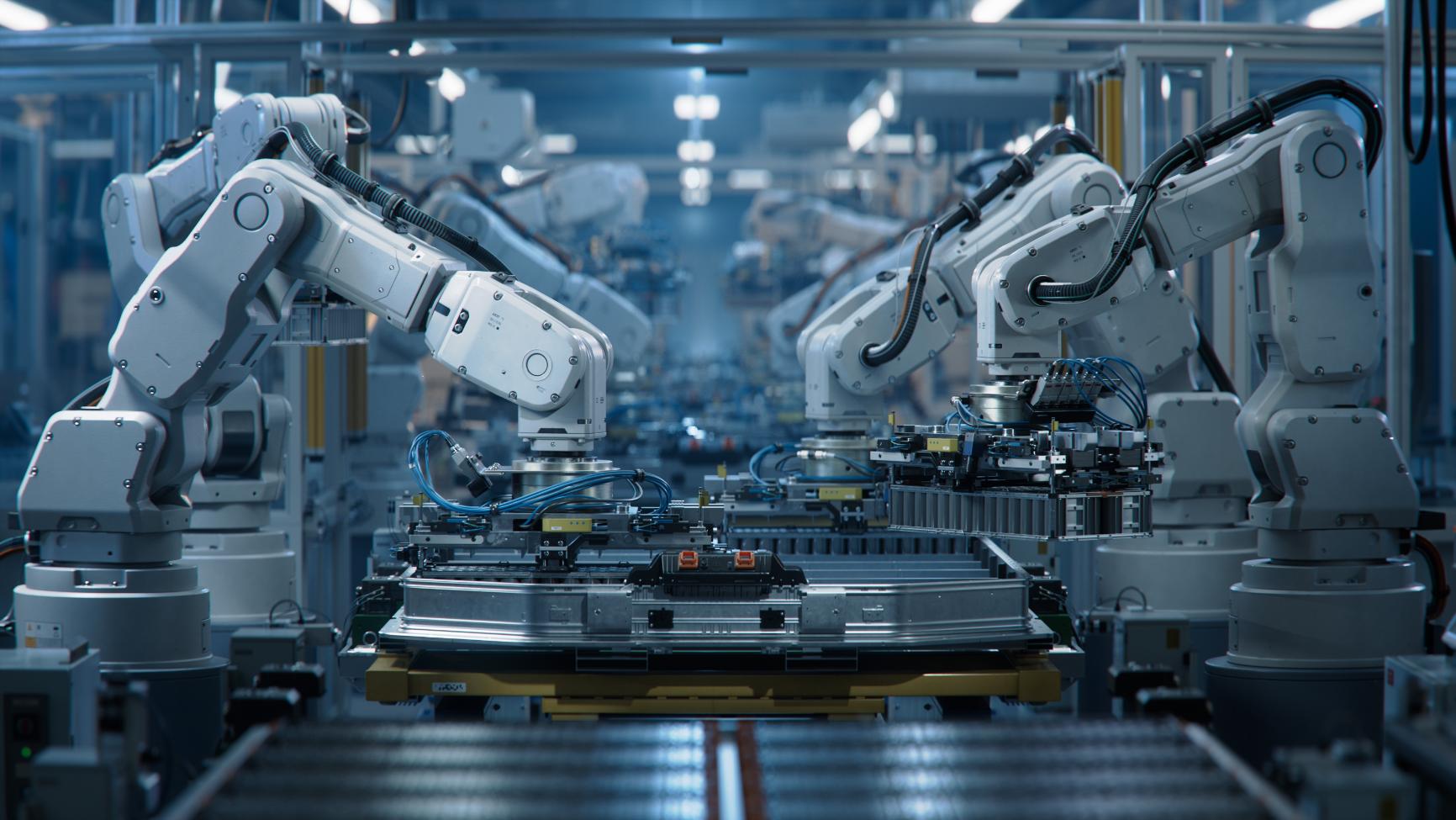The digital twin concept is the idea that a physical structure can have a corresponding digital representation. The concept has come a long way since its inception, evolving from being a means of modeling objects to something much more complex. With an estimated market value of $48.2 billion dollars by 2026, digital twin technology is something no tech company should ignore.
What is a digital twin?
A digital twin is a virtual representation of a real-world object, although it’s also a lot more than that. Using sensors, real-time data feedback, and machine learning, a digital twin is an exact digital reproduction of a physical object or process that can provide vital and useful information about the original.
This is more than a simple virtual model. Such models are certainly useful for presenting snapshots of a physical counterpart at that time. A digital twin goes much further than standard virtual representations, however.
A digital twin uses sensors on the physical object to receive real-time data. This is continuously ported over to the digital model, and updates it accordingly. Such sensor data ensures that the physical twin and its condition and activity is represented precisely and included as part of the digital twin.
A traditional virtual representation is like having a static model of Notre Dame cathedral. After the fire, that model stays the same. A digital twin however, would change along with the real-world object.
These digital twins therefore exist in a virtual environment, just as prone to change as the physical environment. This creates a mirror for the original object as well as the context and conditions in which it exists. It is, therefore, no mere simulation, but a completely accurate virtual copy.
This creates a feedback loop that reflects change in the digital twin when it occurs on or within its physical counterpart. Likewise, changes in the digital twin can be rendered in the physical world.
Tests, therefore, can be run on the digital twin, without having to be done on the physical object. Such tests will show potential issues with how processes and changes can affect the real-world object, without any risks or financial commitment having to be taken with the original.
Types of digital twins
Different types of digital twins are available, and these grow more sophisticated the more complex the actual physical object or process to which they are to correspond:
- Component and Part Twins: Initial digital models at this level target smaller but still highly important parts of a whole, rather than the entire object itself. One digital twin is assigned to replicate one component or smaller part. Such components are unlikely to be common features such as individual nuts or bolts, but rather central features that are issue prone or require testing.
- Asset Twins: Where two or more components are mapped onto a digital twin, then this is the asset that allows for the study of how they interact. These can also allow for early troubleshooting. It’s like being able to test how two parts of an engine might work together without having to mess with the engine itself.
- System or Unit Twins: Where asset twins show how individual component and part twins interact, system twins allow for the study of how assets, or multiple interacting components, work together. Monitoring and running change scenarios on this scale can lead to significant performance enhancement.
- Process Twins: At the largest scale of digital twin work, the entire production environment, or the entirety of an intricate machine, can be represented. Multiple processes are available for analysis and change, and simulation and scenarios can be run that afford the highest degree of accuracy in feedback and data.
The concept of the digital twin and its main four components are now clear. In addition to the digital twin concept as outlined, the technology is now progressing to include operationally optimal additions such as machine learning, artificial intelligence, and hologram manipulation.
Such additions greatly advance the progress and speed of the creation of new products, complicated machinery, and complex processes.
Available digital twin solutions
Having been identified as a Top Strategic Trend by Gartner back in 2018 and in 2021, companies have begun to investigate digital twin technology and solutions in a market that is rapidly becoming eager to embrace them.
This is an overview of some of the products and solutions now available for businesses to engage with:
- Azure Digital Twins: Microsoft’s Internet of Things (IoT) platform is a complete introduction to digital twin technology. With detailed use cases and a growing community of users, it is an excellent place to start and to build support networks.
- General Electric: GE has entered the digital twin field with its Predix Operations Performance Management (Predix OPM) platform. Emphasizing cloud analytics, GE offers a versatile environment to monitor processes and equipment flexibly and remotely.
- Cisco Systems: Cisco runs its offer from the Cisco DNA Center in conjunction with the Cisco Kinetic IoT platform and its Field Network Detector. It’s a seamless piece of hardware and software-enabled digital twin kit.
- Oracle: A central feature of this offer is the addition of a virtual twin that uses machine learning and artificial intelligence to help customers build their digital twins. A unique and helpful feature to speed up the process.
- IBM: Using its Watson IoT technology combined with the Engineering Systems Design Rhapsody (Rational Rhapsody) to offer software developers complete support as they engage with the coding the necessary for digital twin simulations.
- Siemens: Using its own brand Digital Enterprise Suite, Siemens offers access to its MindSphere network to coordinate and collect the mass of data required for reliable digital twins.
Use cases for digital twin technology
The ability to create a complete digital model of complex objects and sophisticated processes obviously lends itself to the engineering, automotive, and energy industries.
Here is an overview of the industries most likely to find significant benefits from shifting all or some of their work from a physical environment to a digital environment.
Power and energy
Sensors related to core processes can collect data to run real-time simulations in a counterpart digital world. In the energy industry, this can be a crucial tool to note and anticipate periods of increased resource demand, and also to identify areas and machinery that are too demanding on energy output.
Engineers can work with the digital twin, manipulating the digital object without any of the serious infrastructural risks posed by experimenting directly with the physical assets.
The digital twin here can then be used to streamline processes, anticipate demand over time by analyzing historical data and real-time data, and so ultimately reduce operational and consumption costs.
Most recently, the United Kingdom has adopted digital twin technology to provide analysis to find optimum solutions to combine traditional forms of energy with low-carbon emission systems.
This shows that digital twins are already being adopted by governments as well as by the tech sector and making significant impacts.
Logistics, supply chain, and retail
Businesses that don’t operate large and intricate machinery can also benefit.
Digital twin technology lends itself to industries where such physical objects are absent, but where process management and planning is multitiered and difficult to keep a handle on.
Such complex systems can be mirrored using a digital process twin that then yields precise operational data in an interactive visual medium.
With employees, warehouses, outlets, and administrative charts spread all over different locations, supply chain logistics can often be impossibly complicated.
Having such a manageable and scalable overview of these processes is therefore an extremely important tool for managers, allowing for greater precision in planning and anticipating problems.
The digital twin market potential in retail and similar logistics chains is therefore likely to be a large chunk of the overall digital twin offer.
The automotive industry
More than any other physical and engineering industry, the automotive industry has always involved extensive and painstaking product testing and development, for performance, for safety, and for developing trends and emerging standards in the market.
In this kind of operational context, mistakes are expensive and cannot be walked back when they are physical and mass-produced.
Digital twins in the automotive industry allow such testing to be effectively transitioned from the physical to the digital, with the same production of functional data.
This means that errors can be found without harmful physical tests, and without money being spent on real-world prototypes. Where such testing was formerly extremely costly and conducted after the creation of physical prototypes, digital twins now confine this to the virtual, saving a great deal of money and labor.
As with logistics, processes in deployment and development can be analyzed for efficacy, leading to enhanced deployment time, and avoiding delays with distribution of parts and employee hours.
Manufacturing industries
Because digital twins are not mere simulations but perfect copies of physical objects and space rendered as digital objects in digital space, units of production, machines, and the associated processes can all be tested and analyzed.
This affords manufacturing hubs the possibility of evaluating the performance of their existing operations and equipment before deploying them, and of seeing how they interact together. Not just at that moment, but also in future instances further down the production cycle.
Errors and issues can therefore be highlighted before physical production even begins, an enormous boon in an industry where physical labor and equipment can be extremely expensive.
Business benefits of digital twins
When a company decides to create a digital twin, the decision is a big one. They can be initially expensive to set up, and involve a great deal of work. For this reason, they are not suited to smaller enterprises that don’t have complicated logistics or machines.
Companies that need to test a physical object’s performance or run a variety of “what if” scenarios, on the other hand, would do well to consider a digital replica.
A digital twin takes real-world data and provides feedback not only about the efficacy of an object or process in the present, but also about its future. This provides the means for planning to a great degree of accuracy, and for extremely effective troubleshooting.
A lot of the benefits overlap, but in summary the main ones are:
Risk reduction
Working on machines and turbines and rigs and plants can be dangerous. Removing this aspect from at least the testing phase by confining it to the digital version greatly enhances safety.
Also, extensive physical work in industry releases harmful gases and chemicals and taxes the environment; working in virtual reality and receiving the same reliable data negates this.
Business risk is therefore removed too, as reaching objectives is not slowed by accidents related to the above, meaning projects remain on track.
Quality control
Sensors produce data that generates insights into assets and processes in the real world and in real time. This information is crucial to testing processes and incorporating product changes before mass production or deployment.
With the majority of testing and iteration carried out on the digital twin, there is no reason the final running process or physical product won’t be as good as it can be.
Monitoring and reliability
Because a digital twin changes along with the physical original, constant live monitoring is possible—even if the asset is hundreds of miles away. This increases the reliability of products and processes, guards against break downs, and allows for a rapid response should anything go wrong.
Lower costs and improve financial planning
As mentioned, a digital twin is a significant investment. But for a company that has a business use, this is an investment that will pay for itself.
The sheer amount of physical labor, parts, breakages, fixing, and process disruptions saved by a physical twin saves an incredible amount of money. Project budgets can then be redistributed into more important areas.
Where repairs are needed, the digital twin can anticipate with great accuracy when they will be required, and so reduce downtime by allowing repair schedules to avoid busy times. This also has great financial impact, reducing maintenance costs that otherwise might deplete budgets.
Summary
The digital twin gives industry a safe, cost-saving environment in which to test products and processes in a digital space.
This slashes costs, and greatly improves the ability to streamline processes and base decisions on actionable data. It also reduces errors, allows for automation of processes, and ultimately leads to superlative product quality and near flawless processes.
This is a disruptive technology that saves money, improves safety and products, and cannot be ignored by companies as they look to the future and plan their digital transformation journey.









